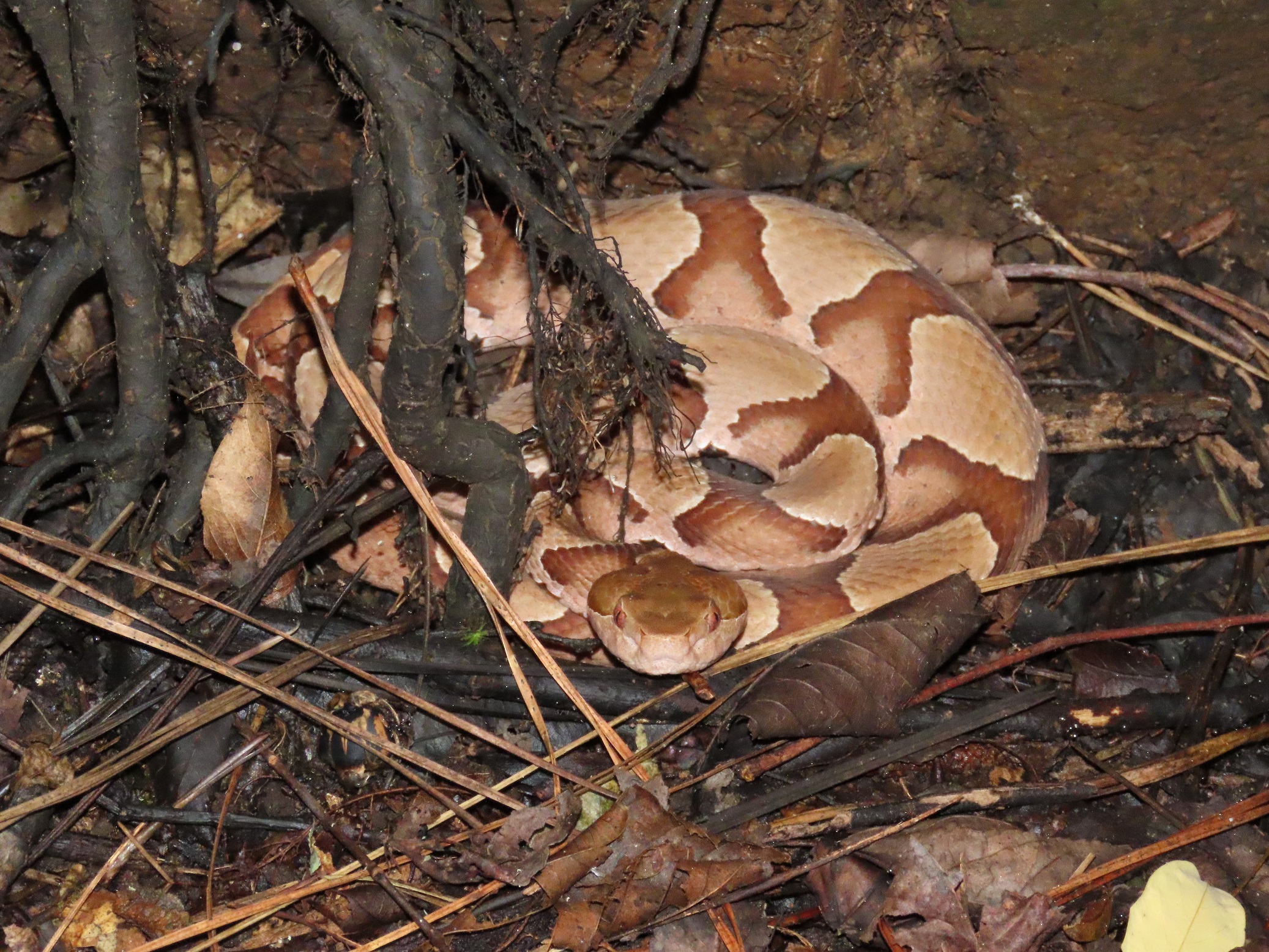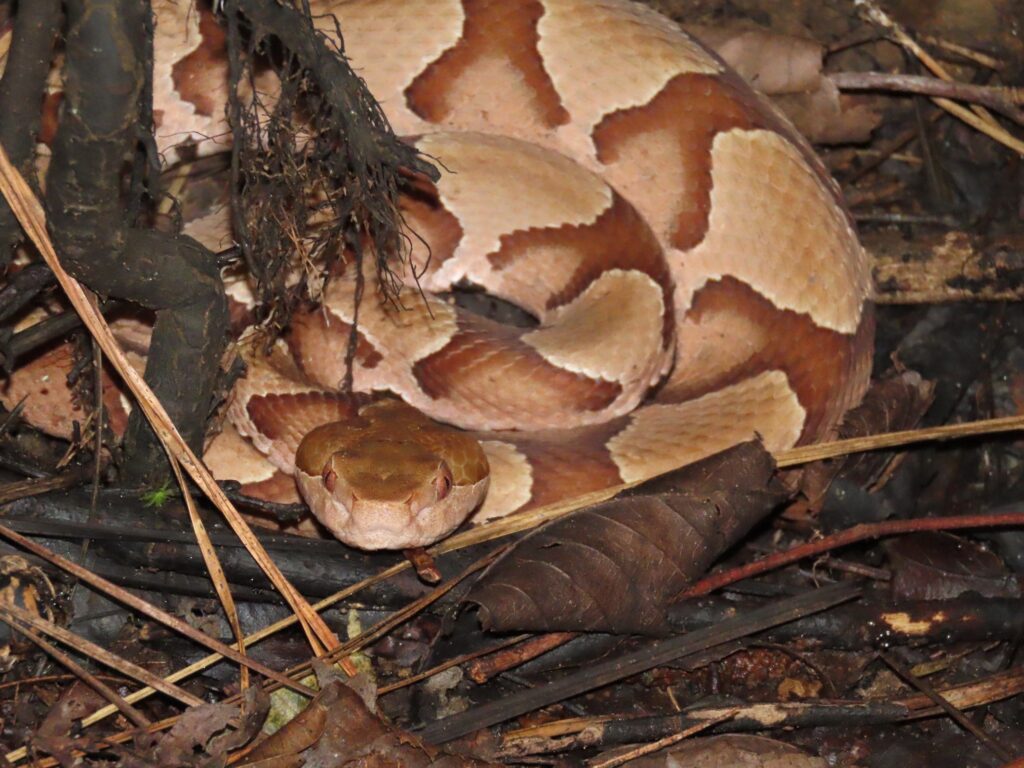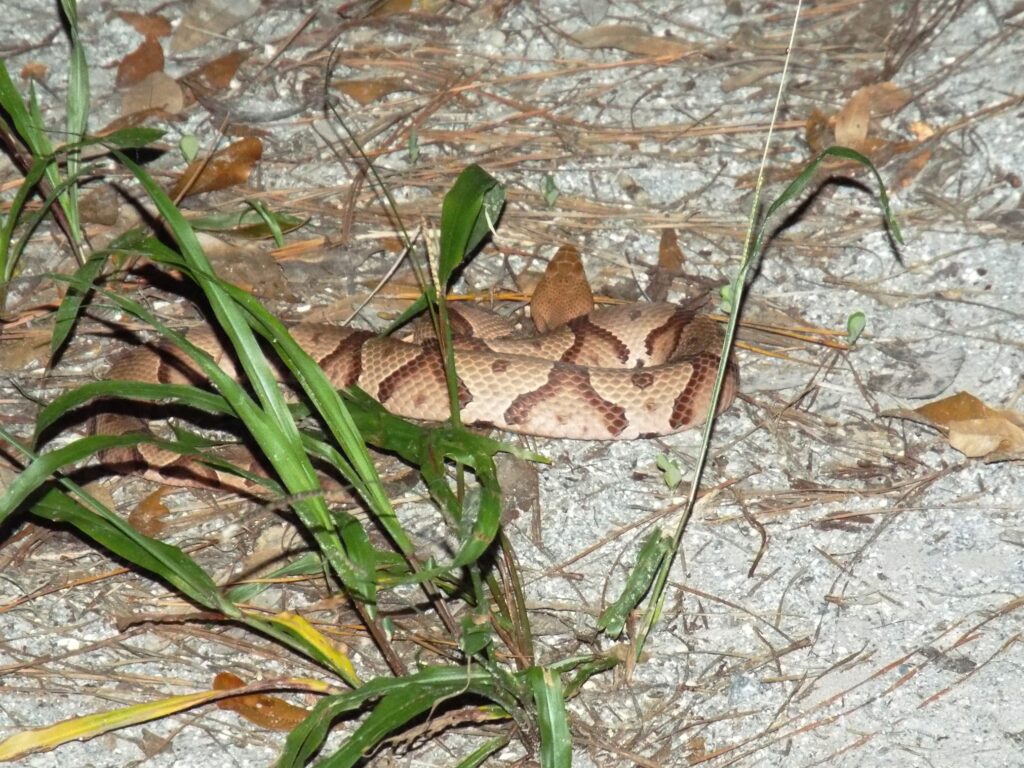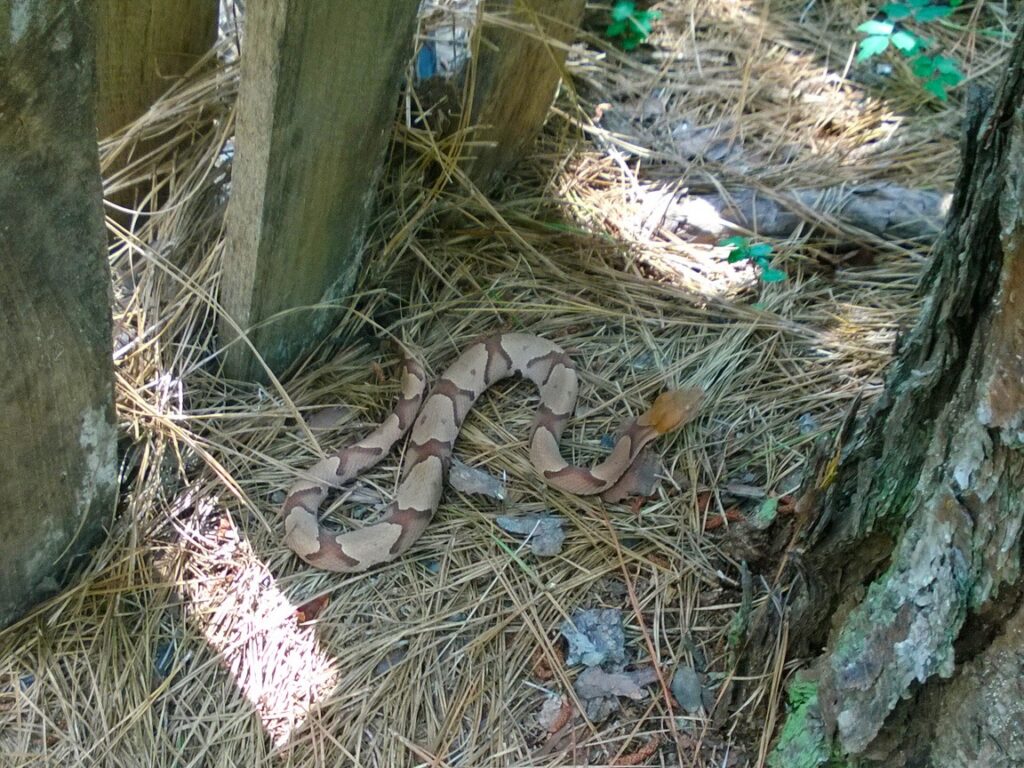



This week for Flora and Fauna Friday is a ruddy reptile with a terrible reputation, the Copperhead (Agkistrodon contortrix).
The Copperhead is our most common Viper on the Island and on the smaller end, averaging two feet in length. Their scales are a tan or copper-orange with dark “X”s down their back. They live in forests where they blend into the leaf litter or nestle under logs to ambush rodents, toads, and insects. Vipers are interesting for reptiles in that they give live birth. Rather than laying eggs, the eggs incubate inside their mother and she gives birth to wide-eyed and scaly-tailed baby snakes.
Copperheads are known for getting into trouble with us humans. Their favorite hidey-holes are underneath something next to a structure and we like to leave somethings lying all around our structures. This is compounded by an instinctual danger reflex unique to Copperheads. When surprised they freeze and let their camouflage hide them, remaining motionless until touched. When touched they assume their cover is blown and go straight to fangs. This preference for getting into our stuff and not letting us know they’re there is the reason why Copperheads account for the vast majority of venomous snake bites in South Carolina. Luckily, Copperheads often dry-bite, injecting no venom, and their venom is the weakest of our Vipers. Healthy adult humans can typically survive their bite without antivenin. However, I wouldn’t roll that dice. One should always seek immediate medical attention if bitten by a venomous snake.